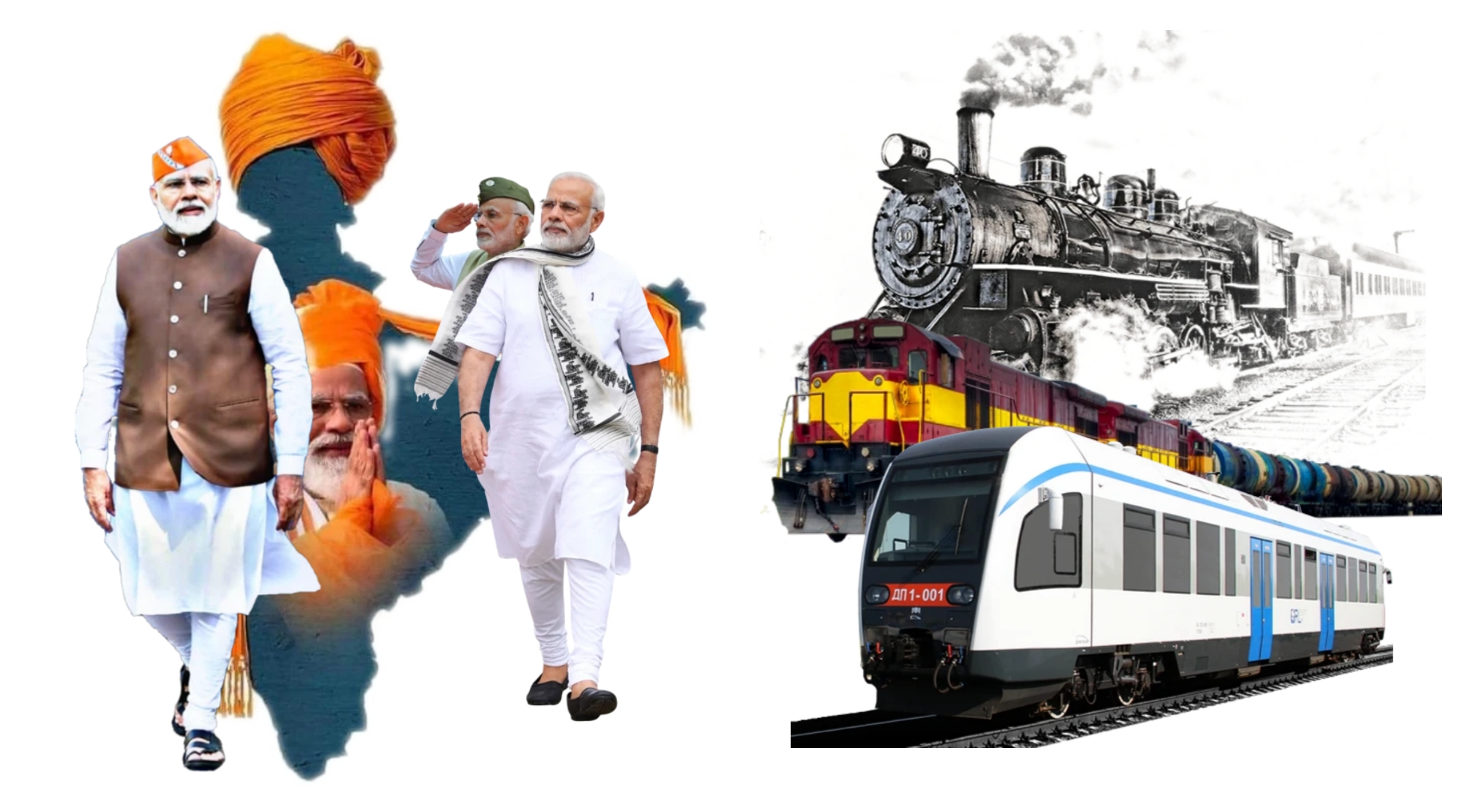As you all know, Lok Sabha elections are approaching, and Indian voters should be aware that they should give their valuable votes based on development rather than false issues propagated by the opposition. Today, the railway is a means through which nearly 20 million people travel daily, meaning that the railway is a major lifeline for the common people of India. But do you know what the situation of the railway was before 2014 and what it is during Narendra Modi's 10 years in office?
How many rail lines were laid during each government's tenure:
Before the Modi government, during the 10 years of UPA rule, 14,985 kilometers of railway lines were laid in the country. By the end of 2023, the Modi government had laid more than 25,871 kilometers of railway lines in the country. According to one figure, during 2022-23, 14 kilometers per day of railway lines were laid, and the target for 2023-24 is to increase it to 16 kilometers per day.
Doubling of Railways:
Efforts were made to double the railway network to reduce pressure on railway tracks and reduce accidents. Under the Modi government, more than 14,000 kilometers of the country's network were doubled.
Railway reaching Arunachal and Meghalaya for the first time:
More than 5,750 kilometers of small lines were converted into broad lines. For the first time under the Modi government, railways reached Arunachal Pradesh and Meghalaya. Nagaland also got its second station after 100 years.
Transformation of Railway Electrification:
The Modi government has transformed railway electrification to a war level. Due to this effort, now 94% of the railway routes in the country have been electrified. In 14 states of the country, 100% of the railway routes have been electrified. 21,801 kilometers of railway routes were electrified. Currently, this number is 61,813 kilometers. That is, three times more routes are electrified compared to previous governments. The biggest benefit has been in reducing diesel consumption, which India depends on other countries for. According to figures provided by the railways, in 2014-15, 285 crore liters of diesel were consumed in the country by the railways. This decreased to 95 crore liters in 2020-21. That is, it decreased by three-quarters. This also reduced the dependence on foreign currency to purchase oil and also controlled pollution caused by the railways.
New Trains Bring a New Era to Railways:
During the Modi government, the country also got trains like Gatimaan Express and Tejas Express. During the Modi government, the Vande Bharat trains were started, which reached 51 in number within just 4-5 years. Compared to the previous Shatabdi Express trains, which started in 1988 but only reached 21 services by 2017. That is, whereas only 34 Shatabdi trains were operated in 30 years, 51 Vande Bharat trains have been operated in the country in just 5 years. Of these 51, 49 Vande Bharat trains were operated within two years. The Modi government is also soon going to introduce Sleeper Vande Bharat trains.
Reduction in Railway Accidents:
From a security perspective, under the Modi government, there has also been a reduction in the number of railway accidents. From 2004 to 2014, an average of 171 railway accidents occurred in the country per year. Under the Modi government, from 2014 to 2023, this number decreased to 70 accidents per year.
Railway Budget Increased 8 Times Under Modi Government:
In 2014, the railway was allocated a budget of about ₹29,000 crore. By 2024-25, this budget has increased nearly 8 times to ₹2.55 lakh crore.
Bullet Train Will Soon Begin:
Recently, Prime Minister Modi showed green flag for developing more than 550 stations in the country as Amrit Bharat Stations. Apart from these, the Modi government is also going to operate a bullet train between Ahmedabad and Mumbai. A lot of work has already been completed for this.



Thanks For Your Comment